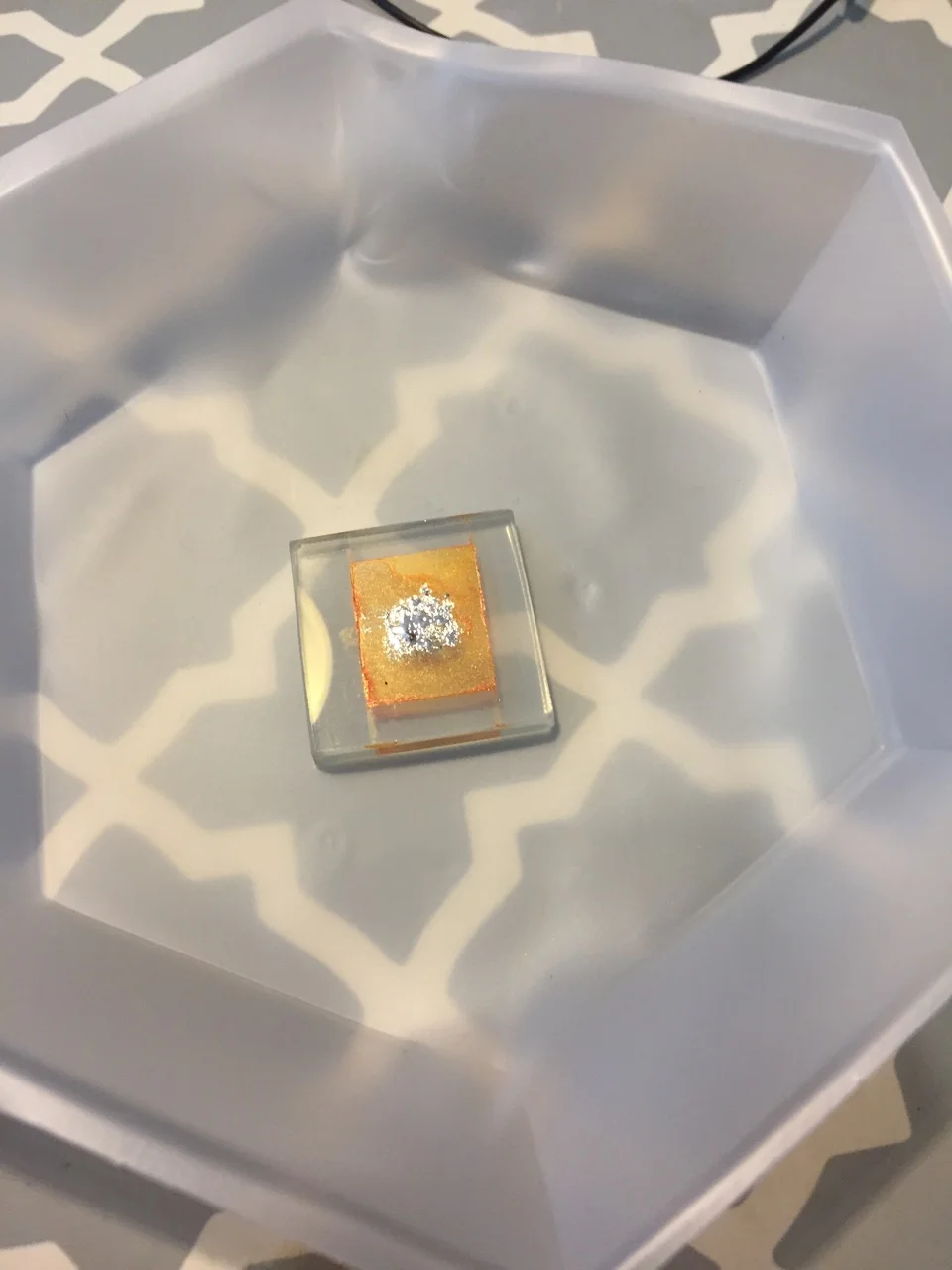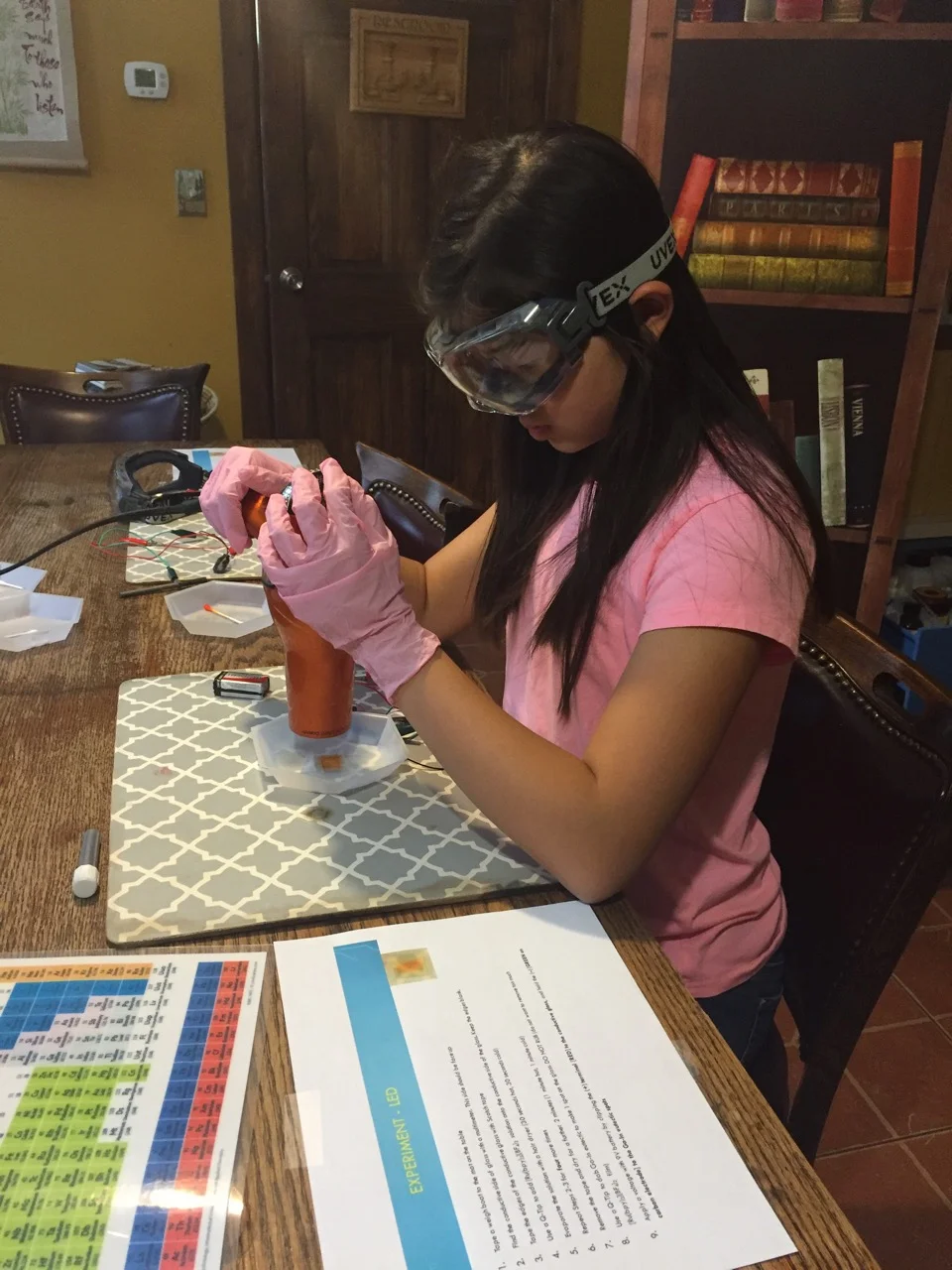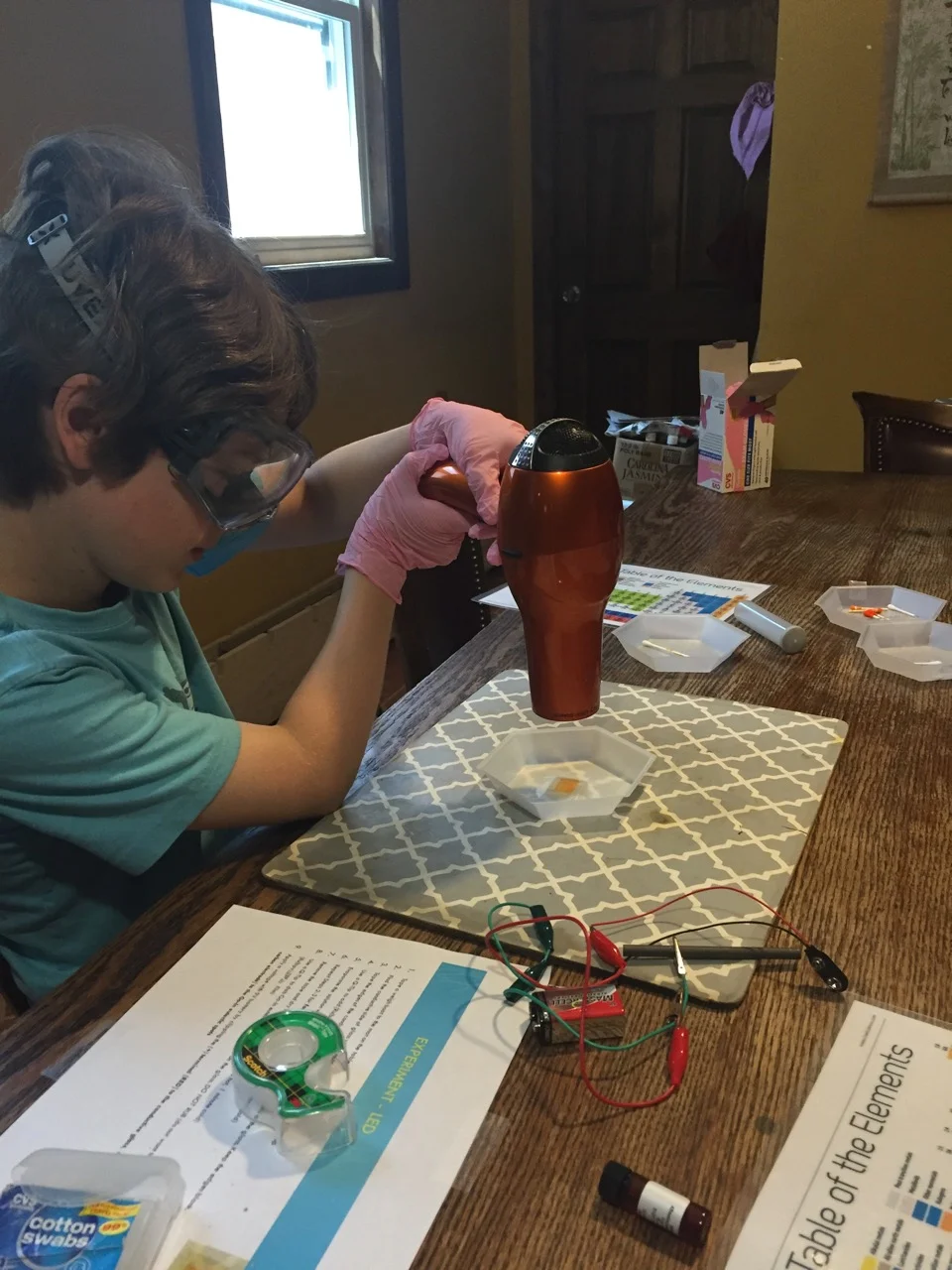Solar, semiconductors, diodes, LEDs and beyond
On Friday we reviewed how a solar cell works, in which a p-type and n-type semiconductor are fused together to form a p-n junction, and this allows for electrons to become excited and relax by releasing electrical energy.
This also led us to discuss how a digital camera utilizes light to excite its electrons in a diode and produce a voltage, which is the signal encoding for each pixel in the photo. Then, we discussed how light emitting diodes (LEDs) use a reverse process through a p-n junction, in which electrical energy excited electrons, which relax by producing light.
The students then synthesized their own organic LEDs. Although there was varying success, the light emitting was observed and the students successfully deduced which substance was the n-type and which was the p-type.
We then took this information about the diode and extended it to the triode, which results in n-p-n stacking. This configuration of semiconductors is the basis for the transistor, which is one of the central components in a computer’s central processing unit (CPU). I then wanted to leave the students with a lesson about the future of computing, quantum computing.
This strange topic clearly fascinated the students, as it highlighted how electrons can behave strangely when cooled to extremely cold temperatures (where the electrons can act as either a bit 0, 1 or as both a 0 and 1).
I had a magnificent time teaching these young students about the science behind technology, and hope that they all not only have a better appreciation of the physical basis for the technology we all use, but have grown as scientific and creative thinkers.



